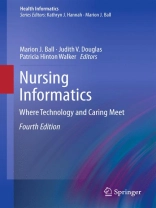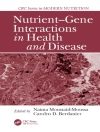Like the three editions that preceded it, this new edition targets markets in health care practice and educational settings. It addresses practicing nurses and nursing students, together with nursing leadership and nursing faculty. It speaks to nursing informatics specialists and—in a departure from earlier editions of this title—to all nurses, regardless of their specialty, extending its usefulness as a text as noted below. In recognition of the evolving electronic health information environment and of interdisciplinary health care teams, the book is designed to be of interest to members of other health care professions (quality officers, administrators, etc.) as well as health information technology professionals (in health care facilities and in industry). The book will include numerous relevant case studies to illustrate the theories and principles discussed, making it an ideal candidate for use within nursing curricula (both undergraduate and graduate), as well as continuing education and staff development programs. This book honors the format established by the first three editions by including a content array and questions to guide the reader. This 4th edition also includes numerous brief case studies that help to illustrate the theories and practices described within the various chapters. Most of these “mini-cases” are provided by members of professional nursing organizations that comprise the TIGER Initiative. These mini-cases are listed in the front matter and highlighted via formatting throughout the text.
Daftar Isi
Section 1 Challenges and Context.- Chapter 1 Nursing and Informatics.- Chapter 2 EHR Adoption Driving Healthcare Reform in the U.S.- Chapter 3 Quality and Patient Safety Demands IT.- Chapter 4 Collaborating for Change.- Chapter 5 Informatics and Interdisciplinary Care.- Chapter 6 An International Perspective.- Section 2 Competencies and Workforce Development.- Chapter 7 Informatics Competencies.- Chapter 8 Academic Preparation in Nursing Informatics.- Chapter 9 Interdisciplinary Education.- Chapter 10 Staff Development and Continuing Education.- Chapter 11 Leadership Development.- Chapter 12 Educational Resources.- Section 3 Capabilities and Nursing Practice.- Chapter 13 Adoption and Change Management.- Chapter 14. Usability.- Chapter 15 Standards and Interoperability.- Chapter 16 Electronic Health Records.- Chapter 17 Evidence Based Practice.- Chapter 18 Technology Enabled Practice.- Chapter 19.- Health-Oriented Communications. Section 4 Transformation.- Chapter 20 Empowered Consumers.- Chapter 21 A Revitalized Profession. Tami Merryman.- Chapter 22 Future Fears: Biothreats.- Chapter 23 Future Promise: Genomics.- Chapter 24 A New Health System.- Appendices.- Appendix 1 TIGER Collaboratives.- Appendix 2 Healthcare Websites.- Index
Tentang Penulis
Kathryn J. Hannah, Ph D, RN, is President of Hannah Educational & Consulting Services, Inc. and Professor, Department of Community Health Sciences, Faculty of Medicine, at the University of Calgary, both in Calgary, Alberta, Canada. Dr. Hannah is the Senior Editor of Springer’s Health Informatics Series.
Marion J. Ball, Ed.D, is Vice President of Clinical Informatics Strategies at Healthlink, Inc. and Professor at Johns Hopkins University School of Nursing, both in Baltimore, Maryland, USA. Dr. Ball is the Co-Editor of Springer’s Health Informatics Series.
Bonnie Wesorick, RN, MSN, is the Founder and CEO of the Clinical Practice Model Resource Center (CPMRC) in Grand Rapids, MI. Bonnie is the Chairperson of the CPMRC Associate Consortium. Her innovative work around CPMRC’s mission to co-create and sustain the best places to practice and the best places to receive care has brought healthcare providers from around the world together.












